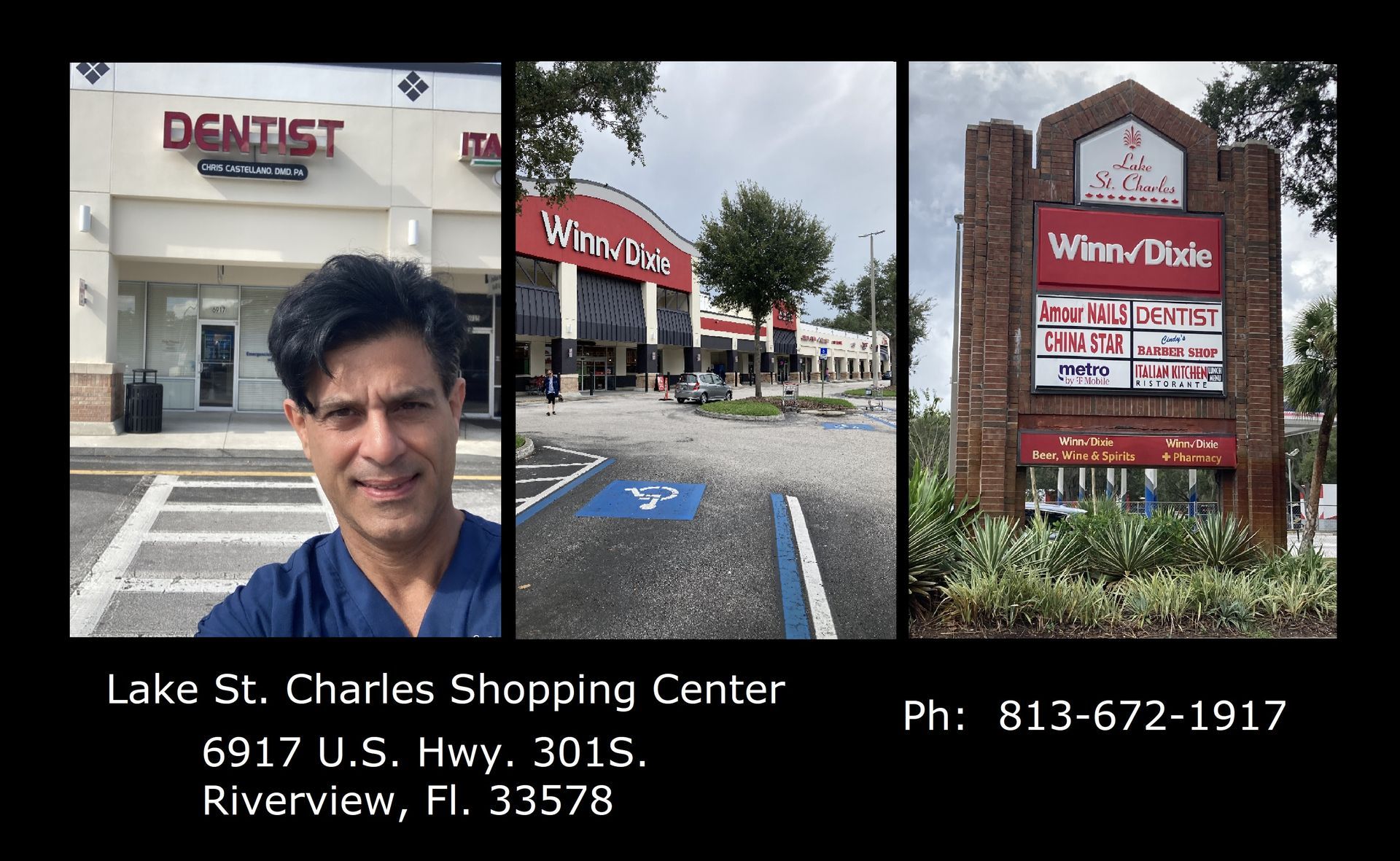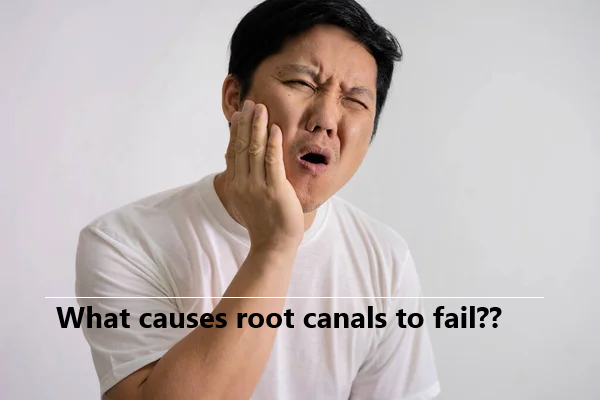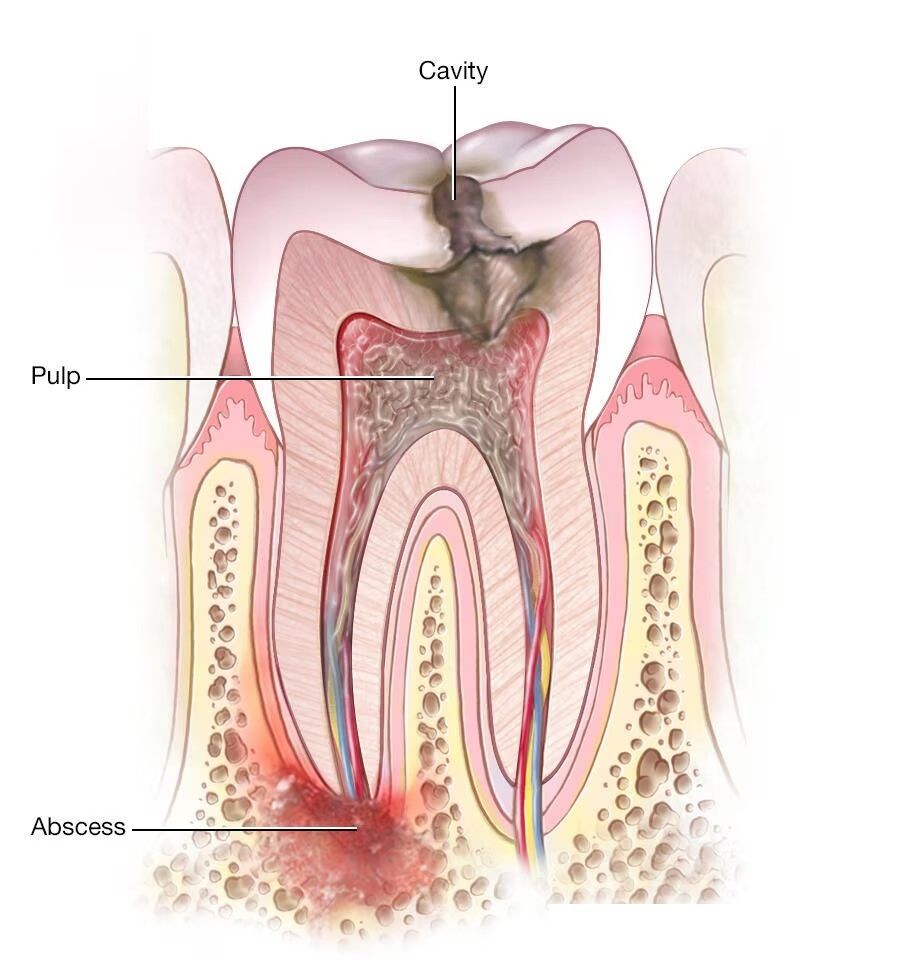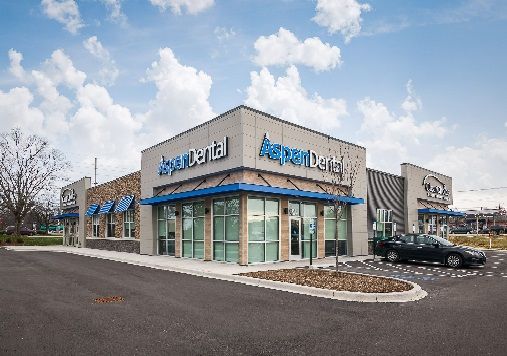Apicoectomy: The Tooth-Saving Procedure When a Root Canal Fails
An apicoectomy is a dental procedure performed to save a tooth that has already undergone a root canal, but where the root canal seal has failed. When the seal is compromised, it creates an unsealed void at the root tip, which can become a habitat for bacteria.
In a healthy person, bacteria regularly enter the bloodstream and are eliminated by the immune system. However, in a tooth with a failed root canal seal, larger voids can form around the tip, providing a protected space for bacteria to multiply.
Often, signs and symptoms do not appear for years after the root canal — as long as the immune system can control the bacteria. Problems arise when the bacteria overwhelm the body’s defenses, which can lead to one of three outcomes:
1. Tooth Abscess
- Signs: Facial swelling, visible apical radiolucency (dark area) on X-rays.
- Symptoms: Pain, fever.
2. Drainage Through a Fistula Tract
- Signs: An open drain in the gum tissue with constant pus discharge, little to no X-ray evidence.
- Symptoms: Little to no swelling, but a sulfur or metallic taste (caused by pus).
3. Pimple-Drainage Cycle
- Signs: Small pimple-like lesion on the gums that fills with pus, bursts, drains, and reforms. Often little to no radiographic evidence early on.
- Symptoms: Localized swelling until the pimple drains, minimal pain, sulfur taste possible.
NOTE: The longer the infection persists without treatment, the more bone loss will be visible around the tooth’s apex on X-rays.
When Is an Apicoectomy Needed?
An apicoectomy may be recommended if:
- A root canal fails due to hidden canals or persistent infection
- The tooth has a fracture near the root tip
- There is chronic pain or swelling after root canal therapy
- Retreatment of the canal is not possible
How an apicoectomy is done
- An apicoectomy is done by flapping the tissue back out of the way exposing the bone, cutting a hole directly thorough overlaying bone to root tip.Curetting the granulation tissue out
- Cutting off the end of the root tip, making small retention preparation or key into the root tip and filling to seal it from the tip. The sealing materials are typically amalgam, or MTA “mineral triaggregate”. MTA is basically gypsum cement.
- The boney cavity is then filled with bone graft material synthetic bone Hydroxyappitite.
- The the tissue is repsitioned over the site sutured closed. Patient leaves on pain meds, antiinflatory meds and anitbiotics for about 2 weeks. Pain swelling can persist upto 6-8 weeks out but gradually dissipates to feeling normal pain free. The bone remodels the graft over 6 months for full healing.
Benefits of an Apicoectomy
- Saves your natural tooth
- Relieves pain and swelling
- Prevents spread of infection
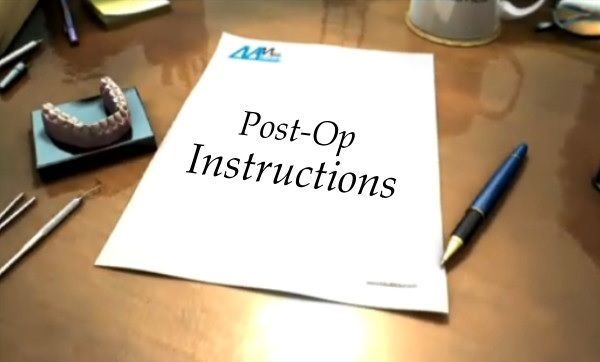
Restoration options if the tooth cannot be saved with apicoectomy:
- After Extraction: Partial denture, bridge, or implant to restore function.
NOTE After Apicoectomy no additional restoration is usually needed — the natural tooth remains in place and functional.
Aftercare & Recovery
- Minor swelling or tenderness is normal
- Soft foods and gentle oral hygiene recommended for a few days
- ice for first 2-4 hours
- if bruising occurs, soak cheek with warm water towel
- take meds as directed
- Follow-up appointment ensures proper healing

#Apicoectomy #RootEndSurgery #ToothSavingDentistry #RiverviewDentist #EndodonticSurgery #RootCanalAlternative #DentalSurgery #DentistNearMe #DentalMicrosurgery #NaturalToothPreservation #Chris A. Castellano DMD
Why Choose Dr. Castellano for Your Apicoectomy in Riverview, FL?
Dr. Chris A. Castellano combines decades of experience with precision microsurgical techniques to ensure the best possible outcome. Our practice offers sedation options, flexible payment plans, and personalized care without the restrictions of insurance networks.
